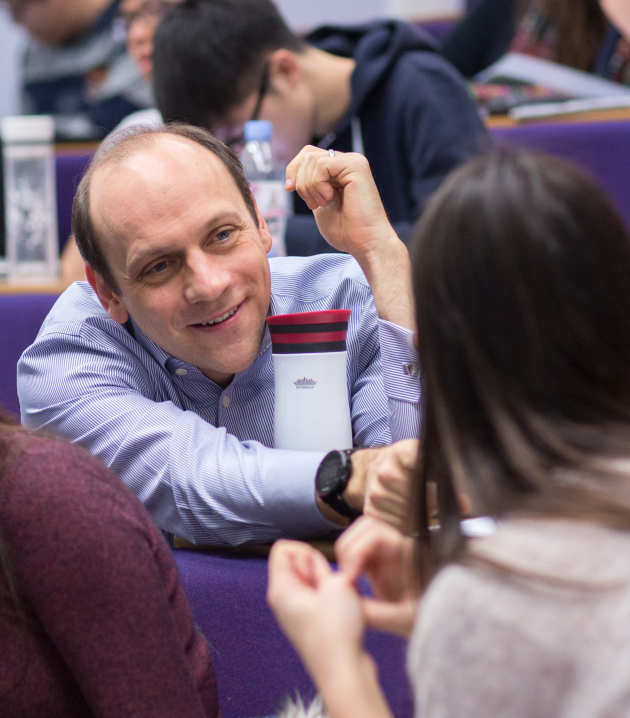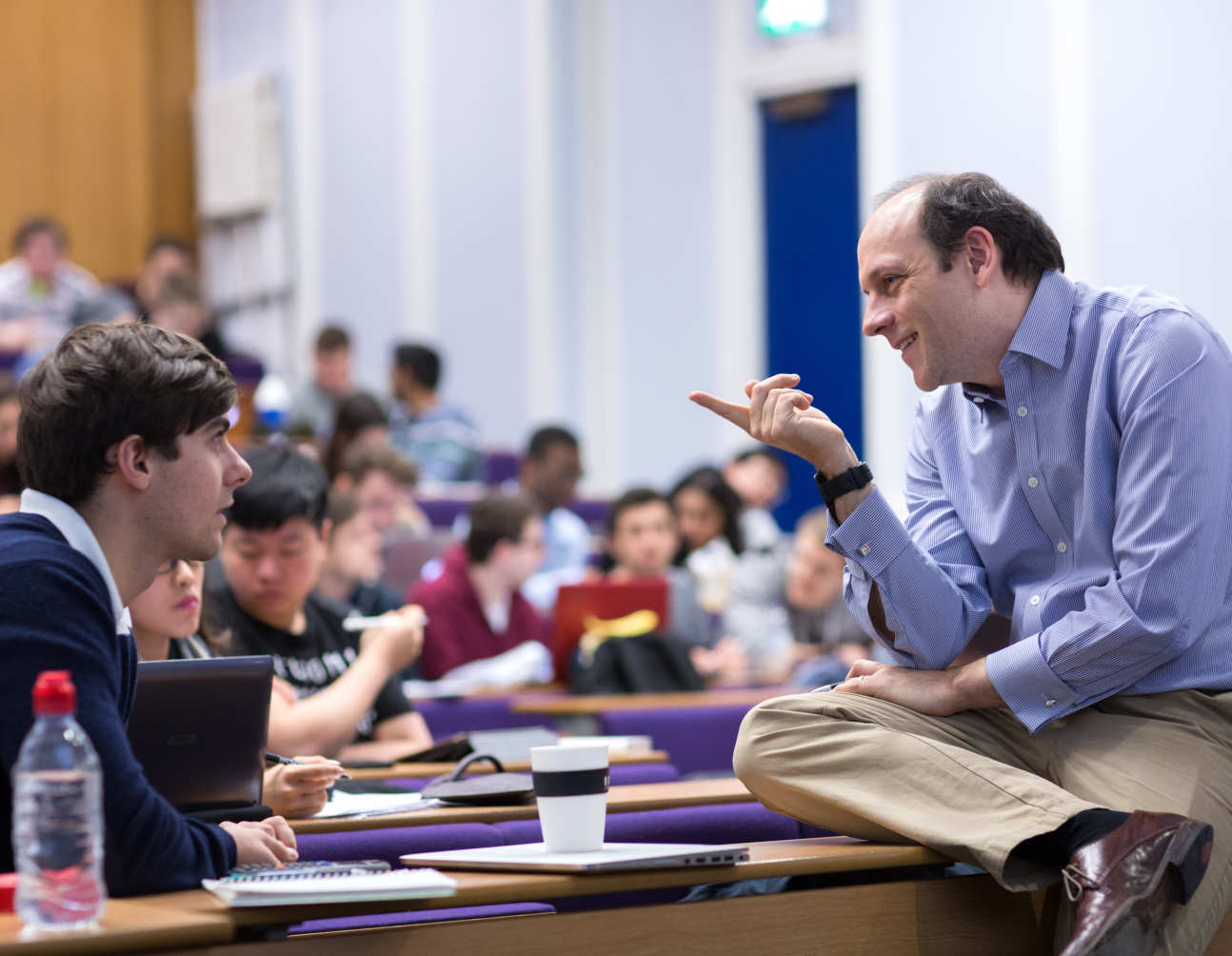 “I have repented of lecturing,” says Professor David Dye. “I’ve given it up because the evidence shows that, even for the best lecturers, it doesn’t always result in as much understanding as we hope. You can give the perfect explanation, and it can be very entertaining, but do students pick up the ideas?”
“I have repented of lecturing,” says Professor David Dye. “I’ve given it up because the evidence shows that, even for the best lecturers, it doesn’t always result in as much understanding as we hope. You can give the perfect explanation, and it can be very entertaining, but do students pick up the ideas?”
Professor Dye teaches first, second and third year engineering students. He admits to a long-standing unease with lectures and whether lecturing really conveys concepts very well. So he has now replaced them with a combination of 15 to 20 minute YouTube videos and detailed notes, and then in class, students work together to discuss and solve simple, conceptual problems. Students must review the material before class but they are also available to re-watch at any time or use in revision.
This technique, where students study first then come to class to do exercises afterwards, is known as flipped learning. The peer-reviewed literature suggests that it is a more effective way of teaching and learning, and it is growing in popularity.
Student comment
“While your method involved a mountain of work to be done before lectures, I think it has helped our learning by allowing us to figure out what we don’t know before coming to lectures and addressing them during the lecture. I think it’s a fair trade to better understand the topic.”
Professor Dye continues: “Students come from all over the world the study together – so why sit in a lecture theatre in silence and then learn at home, alone? Teaching this way means that class time if freed up do something more interesting.”
During lectures, Professor Dye sets quick problems that take minutes to solve and students answer with their phones. Professor Dye uses a web platform called Learning Catalytics to see who is managing and who is struggling. Based on their answers, students are grouped together to discuss their ideas.
Professor Dye believes that teaching in this way offers more flexibility to students with different abilities, allowing them to work at their own pace, and to raise and immediately tackle issues that arise. And because explaining something to someone else helps reinforce it, both faster and slower learners benefit.
He explains: “There might be several different ways to misunderstand a problem. In a traditional lecture, someone might put up their hand to ask about one of them and I will give an explanation. But others in the room who didn’t have that misunderstanding are listening too, and now they might be distracted and confused by a misconception they didn’t even have, but still don’t get their particular questions answered.
“On the other hand, if they talk to a neighbour they will get the answer they need straight away and everyone can move on to trickier problems.”

Despite initial worries that students might be reluctant, Professor Dye says that this approach has proved popular, with elevated student attendance, higher evaluation scores and improved understanding demonstrated in classes and exams. There is also evidence that this approach improves students’ understanding and performance.
“This approach is effective,” he says. “It works well for students. If they stumble with a question, it’s dealt with straight away and they don’t stumble anymore.”
In exams, where students have a choice of questions, they disproportionately attempt Professor Dye’s questions, even though he maintains that he has made them progressively harder.
He explains: “We’re a world-leading university – we want to grow our students as much as they possibly can and I’m keen to push students as hard as possible.
“Students sometimes struggle with a topic. Sometimes they might be poorly prepared by their school curriculum or background. At the same time the research frontier gets ever further away and interdisciplinary breadth becomes ever more important. I firmly believe that the answer to this dilemma is not to make the content shallower, but to improve teaching.”
Sign Up
If you are interested in receiving the Learning and Teaching Newsletter, please email ltstrategy@ic.ac.uk.
You can also view the issue archive online.

